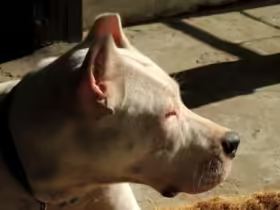Taking a road trip with your dog or cat can be a rewarding experience, offering a chance for new adventures and bonding time. However, traveling with pets requires careful planning to ensure their safety and comfort throughout the journey. From packing essentials to managing travel stress, this comprehensive guide will help you prepare your furry friend for a smooth and enjoyable road trip.
1. Pre-Trip Preparation
A. Visit the Veterinarian
Before embarking on a road trip, it’s essential to ensure your pet is healthy and fit for travel.
- Health Check: Schedule a vet visit to confirm your pet is in good health. Discuss any concerns related to traveling, especially if your pet has existing health conditions.
- Vaccinations and Medications: Ensure your pet’s vaccinations are up-to-date and discuss any required medications or flea/tick preventatives.
- Travel Health Certificate: For long trips or interstate travel, you may need a health certificate from your vet, confirming your pet is healthy and up-to-date on vaccinations.
B. Prepare Your Pet’s Identification
Proper identification is crucial in case your pet gets lost during the trip.
- Microchipping: Ensure your pet is microchipped and that the information is up-to-date.
- ID Tags: Attach a durable ID tag to your pet’s collar with your contact information.
- Photo: Take a recent photo of your pet for identification purposes in case they get lost.
C. Plan Your Route
Plan your route and make sure it accommodates your pet’s needs.
- Pet-Friendly Stops: Research pet-friendly accommodations and rest stops along your route.
- Emergency Vets: Identify veterinary clinics or animal hospitals along your route in case of emergencies.
2. Packing Essentials for Your Pet
Packing appropriately for your pet is key to a successful road trip.
A. Food and Water
- Food: Pack enough of your pet’s regular food for the trip. Consider bringing a small travel bowl for easy feeding on the go.
- Water: Bring a supply of fresh water and a portable water bowl to keep your pet hydrated throughout the journey.
B. Comfort Items
- Bed or Blanket: Bring your pet’s bed or a familiar blanket to provide comfort and a sense of security.
- Toys: Pack a selection of your pet’s favorite toys to keep them entertained and reduce stress.
C. Health and Hygiene Supplies
- Medications: Bring any medications your pet needs, including a copy of the prescription.
- Grooming Supplies: Pack grooming essentials like brushes and poop bags for quick clean-ups.
D. Travel Gear
- Crate or Carrier: A secure crate or carrier is essential for your pet’s safety. Ensure it’s well-ventilated and comfortable.
- Harness and Leash: If traveling by car, a harness and leash can help keep your pet secure in the vehicle.
3. Car Safety and Comfort
Ensuring your pet’s safety and comfort in the car is crucial for a pleasant trip.
A. Secure Your Pet
- Crate Safety: Secure your pet’s crate in the car using seat belts or other safety mechanisms to prevent movement during sudden stops.
- Harness and Seat Belt: For pets who are comfortable with a harness, use a pet seat belt to keep them restrained and safe.
B. Temperature Control
- Climate Control: Keep the car’s temperature comfortable for your pet. Avoid leaving them in a parked car, as temperatures can rise rapidly.
- Ventilation: Ensure proper ventilation in the car to keep the air fresh and prevent overheating.
C. Breaks and Exercise
- Regular Stops: Plan for regular breaks every 2-3 hours to allow your pet to stretch their legs, relieve themselves, and drink water.
- Exercise: Stop at pet-friendly rest areas or parks to give your pet a chance to run and play.
4. Managing Travel Stress
Traveling can be stressful for pets, so it’s important to manage their anxiety and comfort during the trip.
A. Familiarization
- Pre-Trip Conditioning: Take your pet on short car trips before the actual journey to help them get used to the car and reduce anxiety.
- Comfort Items: Bring familiar items like their bed, blanket, and toys to provide a sense of security.
B. Calm Environment
- Soothing Music: Play calming music or a pet-friendly audio program to help soothe your pet during the trip.
- Comfortable Space: Ensure your pet has a comfortable and secure space in the car where they can relax.
C. Health Monitoring
- Watch for Signs of Stress: Monitor your pet for signs of stress or discomfort, such as excessive panting, whining, or drooling.
- Hydration and Food: Ensure your pet stays hydrated and has access to their regular food to avoid digestive issues.
5. Staying Safe and Legal
Adhering to safety and legal requirements ensures a smooth trip and prevents any issues.
A. Follow Local Regulations
- Pet Laws: Familiarize yourself with pet regulations and leash laws in the areas you’ll be traveling through.
- Pet-Friendly Accommodations: Confirm that accommodations are pet-friendly and understand their pet policies.
B. Emergency Preparedness
- First Aid Kit: Pack a pet first aid kit with essentials like bandages, antiseptic, and a digital thermometer.
- Emergency Contacts: Have a list of emergency contacts, including your vet’s phone number and local emergency veterinary services.
6. Arriving at Your Destination
Preparing for your pet’s arrival at your destination helps ensure a smooth transition.
A. Settling In
- Familiar Items: Set up your pet’s bed, toys, and feeding area as soon as you arrive to help them settle into the new environment.
- Routine: Try to maintain your pet’s regular routine as much as possible to minimize stress.
B. Exploration and Adjustment
- Supervised Exploration: Allow your pet to explore the new environment under supervision to get accustomed to their surroundings.
- Adjust Gradually: Gradually introduce your pet to new areas and people to avoid overwhelming them.
7. Post-Trip Care
After your trip, monitor your pet’s health and well-being.
A. Health Check
- Observe for Issues: Watch for any signs of health issues or stress after the trip, such as changes in appetite, behavior, or signs of illness.
- Vet Visit: Schedule a follow-up vet visit if necessary, especially if your pet exhibited any health issues during the trip.
B. Review and Reflect
- Assess the Trip: Reflect on what went well and any areas for improvement for future trips.
- Adjust as Needed: Make any necessary adjustments to your pet travel routine based on your observations and experiences.
Conclusion
Traveling with your dog or cat can be a delightful experience with the right preparation and planning. By ensuring your pet’s safety, comfort, and well-being throughout the journey, you can create a positive and enjoyable road trip for both you and your furry friend. From pre-trip preparation and packing essentials to managing travel stress and post-trip care, each step is crucial for a successful adventure. With these tips and considerations, you’ll be well-equipped to embark on a memorable road trip with your beloved pet.











Leave a Reply